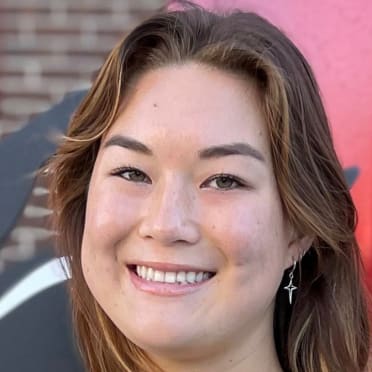Dodgers and Cubs get first look at automated ball-strike challenges
GLENDALE, Ariz. -- The Automated Ball-Strike System (ABS) challenge got its first test run in big league Spring Training on Thursday afternoon, with two challenges taking place in the Cactus League opener between the Cubs and Dodgers.
The challenge system is a compromise between ¡°full ABS¡± -- where all ball and strike calls are automated -- and the status quo. With technology tracking pitch locations in the background, the batter, pitcher or catcher can challenge a ball or strike call that they believe the home-plate umpire got wrong.
Variations of the system have been tested in the Minor Leagues since 2022, and now Major Leaguers get to try it out for the first time at 13 Spring Training ballparks, covering 19 home teams with shared facilities, that are equipped with the technology. The system will be used in approximately 60 percent of Spring Training games, with every team having a chance to use it.
Before the game, Dodgers manager Dave Roberts couldn't resist getting in a crack at third baseman Max Muncy, whom he said was not allowed to use a challenge. (Each team has two challenges, which are retained or lost depending on the success of the challenge.)
Naturally, Muncy was at the plate for the first challenge on record at MLB Spring Training.
Cubs starter Cody Poteet served up an 0-1 fastball to Muncy that clipped the bottom of the zone in the bottom of the first inning. Muncy took the pitch, which was called a ball, but Poteet tapped his head to use one of Chicago's challenges. The call was overturned, and Muncy went down looking on the fifth pitch of the at-bat.
"When that ball crossed," Muncy said, "I thought it was a strike right away and [home-plate umpire Tony Randazzo] balled it. I look out there and [Poteet's] tapping his head and I went, 'Well, I'm going to be the first one.'"
Said Poteet: "Using it a little bit last year, I guess it felt more normal. But it¡¯s cool to be the one to fire away. I wasn¡¯t shy with it, for sure."
The second challenge took place in the bottom of the eighth inning, when Cubs catcher Pablo Aliendo challenged a ball call on Dodgers shortstop Sean McLain. The call was upheld, and McLain, facing right-hander Frankie Scalzo Jr., ended up drawing a walk.
Both Poteet and Muncy had previous experience with the ABS challenge system. Poteet spent most of last season in the Minors, while Muncy got to see how it worked while on a rehab assignment. Muncy didn't use a challenge back then, but he was able to get a decent understanding of how the system worked.
While he experienced some inconsistencies in how the technology worked at different ballparks, Muncy thought the idea of the challenge system was headed in a good direction.
"There'd be certain pitches that you would see, and you'd look up on the board and it'd have it in a completely different spot," Muncy said. "Obviously when you're in the dugout or on the field you can't tell exactly where that pitch is at, but you can see height-wise, usually. ¡ The technology isn't 100% there, but the idea of it's really cool. It's progressing."
While the Cubs made sure their players were aware that ABS challenges were available during the game, they didn't put an emphasis on preparing for the system while it's only in use on a trial basis.
"It's a test for some future, unknown thing," manager Craig Counsell said Wednesday, "so it's a little hard to put your [heads together] and really prepare for it when there's enough that we got to get ready for. I'm sure we'll see the first one, and there will be maybe an, 'Ooh,' maybe an, 'Ahh.'"
Cubs first baseman Michael Busch, who came up in the Dodgers' system, had some prior experience using the challenge system in 2023.
"In my experience with it, it¡¯s just another part of the game," Busch said. "I don¡¯t really think it messes with the game too much. ¡ I think it¡¯ll be interesting to see just kind of how the flow of the game goes, and how some of the veteran guys and some of the guys in the big leagues play along with it."
Roberts, who had expressed curiosity as to how the system would play out before the game, approved of his first experience with it.
"I think it's actually a pretty good system," Roberts said. "Obviously, trying to figure out how many challenges makes the most sense in a Major League ballgame. ¡ I like it, because especially in a big spot, you want to get the call right.¡±
